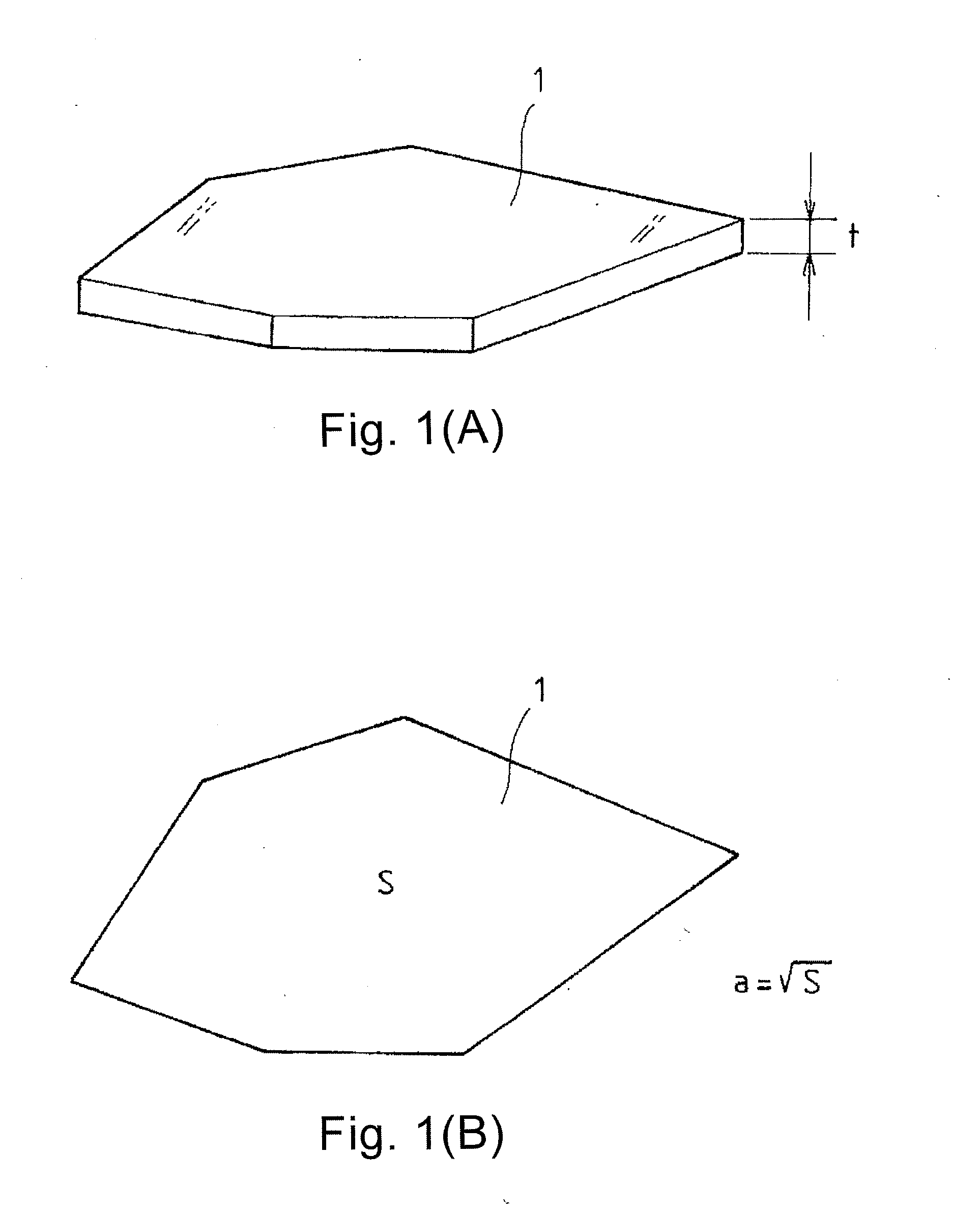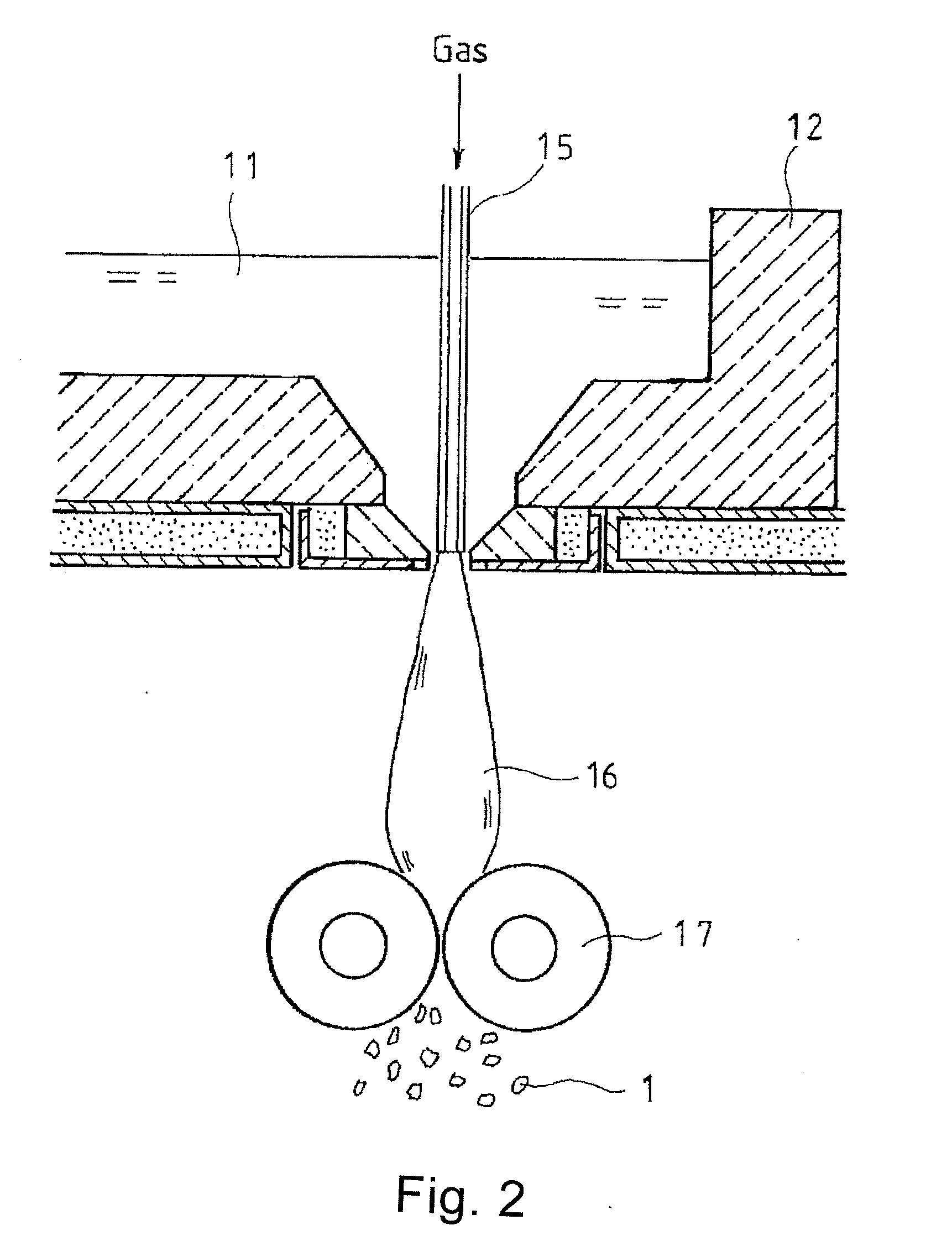Glass compositions
a technology of glass filler and composition, applied in the field of glass filler, can solve the problems of prior art, achieve the effects of convenient control of glass filler, facilitate the formation of glass filler, and stable quality
- Summary
- Abstract
- Description
- Claims
- Application Information
AI Technical Summary
Benefits of technology
Problems solved by technology
Method used
Image
Examples
examples 1 to 19
, Comparative Examples 1 to 8
[0104]General glass crude materials such as silica sand were blended so as to prepare batches of glass compositions for each example and comparative example. Each batch was heated with an electric furnace to 1400° C. to 1600° C. and melted and then kept in the same state for about four hours until the compositions became uniform. Then, the melted glass was poured on a steel plate and gradually cooled to room temperature in the electric furnace to obtain glass samples.
[0105]For the glass prepared in such a manner, the density of the glass was measured by means of the Archimedean method.
[0106]Further, the relationship between viscosity and temperature was obtained using a known platinum ball-pulling method. The platinum ball-pulling method is a process in which a platinum ball is immersed in molten glass and the relationship of the acting load (resistance) when pulling up the platinum ball at an equal velocity motion and the gravity or buoyancy acting on t...
examples 20 to 28
[0123]The glass compositions of examples 1 to 19 were melted again in an electric furnace and then cooled and formed into pellets. The pellets were then fed into the preparation apparatus illustrated in FIG. 2 to prepare the glass flakes of examples 20 to 38, which have an average thickness of 0.5 to 1 μm. The refractive indexes of the glass flakes were measured. The measurement results are shown in table 5.
[0124]The glass flakes were mixed with polycarbonate resin to prepare polycarbonate resin compositions.
TABLE 5Ex 20Ex 21Ex 22Ex 23Ex 24Ex 25Ex 26Ex 27Ex 28Refractive index nD1.5851.5831.5811.5771.5841.5871.5871.5871.580Ex 29Ex 30Ex 31Ex 32Ex 33Ex 34Ex 35Ex 36Ex 37Ex 38Refractive index nD1.5831.5831.5821.5901.5791.5751.5851.5841.5931.582
examples 39 to 57
[0125]The glass compositions of examples 1 to 19 were melted again in an electric furnace and then cooled and formed into pellets. The pellets were then fed into the preparation apparatus illustrated in FIGS. 3 and 4 to prepare the chopped strands of examples 39 to 57, which have an average fiber diameter of 10 to 20 μm and a length of 3 mm.
[0126]The chopped strands (glass filler) were mixed with polycarbonate resin to prepare polycarbonate resin compositions.
PUM
| Property | Measurement | Unit |
|---|---|---|
| refractive index | aaaaa | aaaaa |
| refractive index | aaaaa | aaaaa |
| Abbe number νd | aaaaa | aaaaa |
Abstract
Description
Claims
Application Information
 Login to View More
Login to View More - R&D
- Intellectual Property
- Life Sciences
- Materials
- Tech Scout
- Unparalleled Data Quality
- Higher Quality Content
- 60% Fewer Hallucinations
Browse by: Latest US Patents, China's latest patents, Technical Efficacy Thesaurus, Application Domain, Technology Topic, Popular Technical Reports.
© 2025 PatSnap. All rights reserved.Legal|Privacy policy|Modern Slavery Act Transparency Statement|Sitemap|About US| Contact US: help@patsnap.com



